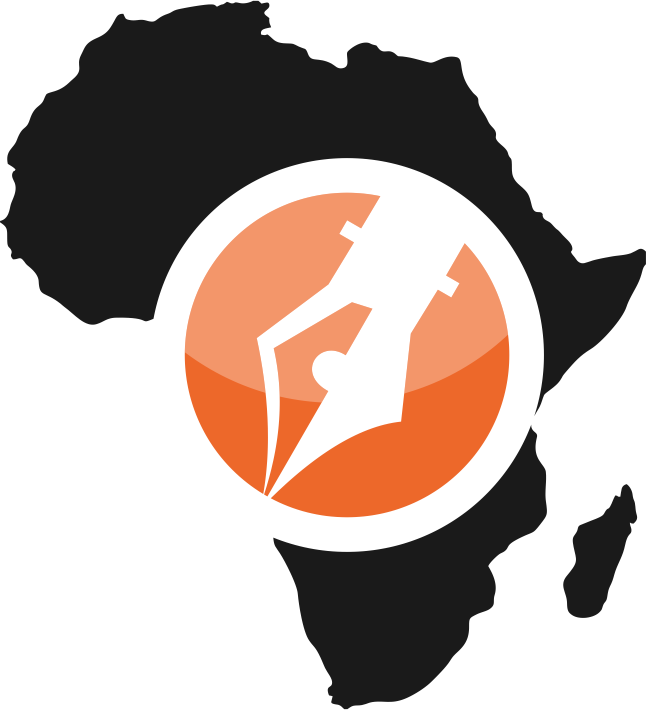In composition studies, an article is a short work of nonfiction that typically appears in a magazine or newspaper or on a website. Unlike essays, which often highlight the subjective impressions of the author (or narrator), articles are commonly written from an objective point of view. Articles include news items, feature stories, reports, profiles, instructions, product descriptions, and other informative pieces of writing.
Observations – Subject and Theme
“A useful exercise is to look at some good articles and name the broader subject and the particular aspect each treats. You will find that the subject always deals with a partial aspect examined from some viewpoint; it is never a crammed condensation of the whole.
“…Observe that there are two essential elements of an article: subject and theme. The subject is what the article is about: the issue, event, or person it deals with. (Again, an article must cover only an aspect of a whole.) The theme is what the author wants to say about the subject—what he brings to the subject.”
(Ayn Rand, The Art of Nonfiction: A Guide for Writers and Readers, ed. by Robert Mayhew. Plume, 2001)
“An article is not everything that’s true. It’s every important thing that’s true.”
(Gary Provost, Beyond Style: Mastering the Finer Points of Writing. Writer’s Digest Books, 1988)
Five Ways of Organizing an Article
“There are five ways to structure your article. They are: – The inverted pyramid
– The double helix
– The chronological double-helix
– The chronological report
– The storytelling model
Think about how you read a newspaper: you scan the captions and then read the first paragraph or two to get the gist of the article and then read further if you want to know more of the details. That’s the inverted pyramid style of writing used by journalists, in which what’s important comes first. The double-helix also presents facts in order of importance but it alternates between two separate sets of information. For example, suppose you are writing an article about the two national political conventions. You’ll first present Fact 1 about the Democratic convention, then Fact 2 about the Republicans, then Fact 2 about the Democrats, Fact 2 about the Republicans, and so on. The chronological double-helix begins like the double helix but once the important facts from each set of information have been presented, it then goes off to relay the events in chronological order…
“The chronological report is the most straightforward structure to follow since it is written in the order in which the events occurred. The final structure is the storytelling model, which utilizes some of the techniques of fiction writing, so you would want to bring the reader into the story right away even if it means beginning in the middle or even near the end and then filling in the facts as the story unfolds.”
(Richard D. Bank, The Everything Guide to Writing Nonfiction. Adams Media, 2010)
The Lead
“The most important sentence in any article is the first one. If it doesn’t induce the reader to proceed to the second sentence, your article is dead. And if the second sentence doesn’t induce him to continue to the third sentence, it’s equally dead. Of such a progression of sentences, each tugging the reader forward until he is hooked, a writer constructs that fateful unit, the ‘lead.'”
(William Zinsser, On Writing Well: The Classic Guide to Writing Nonfiction, 7th ed. HarperCollins, 2006)
Writing for Digital Media
“More and more, article content written for printed media is also appearing on digital devices (often as an edited version of a longer article) for readers who have short attention spans due to time constraints or their device’s small screen. As a result, digital publishers are seeking audio versions of content that is significantly condensed and written in a conversational style. Often, content writers must now submit their articles with the understanding they will appear in several media formats.”
(Roger W. Nielsen, Writing Content: Mastering Magazine and Online Writing. R.W. Nielsen, 2009)
Clearing the confusion – Essays vs. Articles
“Given the confusion of genre minglings and overlaps, what finally distinguishes an essay from an article may just be the author’s gumption, the extent to which personal voice, vision, and style are the prime movers and shapers, even though the authorial ‘I’ may be only a remote energy, nowhere visible but everywhere present. (‘We commonly do not remember,’ Thoreau wrote in the opening paragraphs of Walden, ‘that it is, after all, always the first person that is speaking.’)”
(Justin Kaplan, quoted by Robert Atwan in The Best American Essays, College Edition, 2nd ed. Houghton Mifflin, 1998)
Article Writing
What, really, is an article?
An article is a piece of writing written for a large audience. The main motive behind writing an article is that it should be published in either newspapers or magazines or journals so as to make some difference to the world. It may be the topics of interest of the writer or it may be related to some current issues. The topic can either be serious or not-so-serious; Same goes for its tone and language.
Objectives of Article Writing
An article is written with the following objectives:
– To bring out the topics or the matter of interest in the limelight
– To provide information on topics
– To offer suggestions and pieces of advice
– To influence the readers and urge them to have pragmatic lines of thought
– To discuss various stories, persons, locations, rising-issues, and technical developments
Format of Article Writing
An article must be organized in a proper way so as to draw the attention of the readers. The basic outline for an article writing format is
Heading / Title
A line having the writer’s name
Body (the main part of the article, 2 – 3 paragraphs)
Conclusion (Ending paragraph of the article with the opinion or recommendation, anticipation or an appeal)
Steps for Article Writing Format
Think of the topic you want to write the article about. Only after you’ve decided your topic you can go ahead and undertake the further steps in the process one by one:
- Target Audience Identify the concerning reading group
- Purpose: Find the objective or aim of writing the article
- Collect & Select: Gather as such information as possible. Also, identify the details that are most significant
- Organize: Arrange the information and the facts in a logical way
Once you’ve taken care of all the Above steps you move forward to the final step- Writing.
When writing an article, always use proper grammar, spelling and appropriate punctuation marks.
Use vocabulary skill
Keep the introduction of the topic catching, interesting and short.
Discuss the opinion and the matter in an organized and descriptive manner.
Types of articles
Get familiar with the type of article you want to write. As you’re figuring out your topic and focus, think about the type of article that will best suit the points that you want to convey. Some article types are better suited to certain topics. Some of the most common types of articles are:
News: This type of article presents facts about something that happened recently or that will happen in the near future. It usually covers the 5 Ws and H: who, what, where when, why and how.
Feature: This type of article presents information in a more creative, descriptive way than a straight news article. It can be an article about a person, a phenomenon, a place, or other subjects.
Editorial: This article presents a writer’s opinions on a topic or debate. It is intended to persuade the reader to think a certain way about a topic.[1]
How-to: This article gives clear instructions and information about how to accomplish some task.
Profile: This article presents information about a person, using information that the writer typically gathers through interviews and background research.
Common Mistakes in the Article Writing Format
Now that you know the steps of article writing and the article writing format, the occurrence of mistakes becomes obvious. Some of the common mistakes are:
- Not using facts or quotes or similar cases.
- The language should not be too formal.
- The article must be in easy language for better understanding.
- The title of the article must be catchy and clearly understandable.
- No use of paragraphs
- Expressing personal views is fine but the author must avoid talk about himself/herself as much as possible.
Points to Keep in Mind for the Article Writing Format*
- The topics of the articles should be unique and relevant.
- The article has to get attention.
- It has to be interesting.
- It has to be easy to read
- The reader is identified
- Find the main goal of writing an article. The goal can be anything from providing information, entertainment, and advice or for comparing, etc.
- The title must be eye-catching, clear, and interesting
- The introduction or the starting paragraph must be highly attentive. Use your vocabulary skills or try to use some interrogative words for the start
- Use clear statements and make assertions
- Avoid repetition and over the top logic and reasons
- Use the style of paragraph writing and write the contents uniquely and unambiguously
- Avoid using the points which interest you only and not for the general public
- Write a good and logical ending
Click to Read – Writing Styles by By Kimberly Chirodzero Zimbabwe
Essay Writing
I bet some people become dentists just to avoid having to write essays. Essays and research papers can invoke massive amounts of stress and anxiety. So can dentists. But no matter what classes you take in high school or college, you’re going to have to write an essay at some point. Whether you love or hate them, following these nine steps can improve your essays, reduce your stress, and possibly save you a notable amount of time.
-
Analyze the essay prompt
The most important step in writing an essay or research paper is to fully comprehend the essay question. An essay can be wonderfully articulated and thought out, but will still result in a poor grade if it doesn’t adequately answer the prompt provided. Break the prompt down into two parts.
What is the prompt directly asking?
What is the essay topic?
What research do I need to do to fully understand the topic?
How long does the essay need to be?
What is the prompt indirectly asking?
Is the prompt asking for my opinion, the opinion of credible scholarly sources, or facts?
How can I relate this essay topic to what we have covered in class?
Once these questions have been answered, you can begin constructing your essay.
-
Create a thesis statement
Start your essay with a thesis statement that will guide your entire paper. Based on the prompt, what do you want to argue in your essay? Your thesis statement should be concise, but incorporate all the main points you’d like to address in your paper. Continually refer to your thesis statement when writing your essay and make sure to never stray from your main points. A good thesis statement can be the difference between an A and a B.
-
Make an outline
Use an outline to plan out your essay/research paper before writing it. Working from your thesis statement, plot out how you want your paper to flow and what information you want to include. This will make writing the full draft of your paper much easier
-
Begin with the body, not the introduction
Don’t start with the introduction. The introduction is where some students struggle the most, so to avoid getting bogged down, create the introduction later. This will allow you to fully form your thoughts and ideas and come back and integrate the main ideas into your introduction.
-
Begin each paragraph with a topic sentence*
Begin each paragraph with a topic sentence, which expresses the main idea of the paragraph. Each paragraph should contain quotes or contextual information to defend your topic sentence and thesis statement.
-
Use credible sources
Quotes and contextual information are important for establishing credibility and supporting your argument, so make sure that the quotes and information are coming from credible scholarly sources. Examples of scholarly sources include academic journals, peer-reviewed articles, textbooks, books by accredited authors, and NPR articles. Examples of unacceptable scholarly sources are magazine articles, open forum submissions, encyclopedia entries, and unverified online sources. If you’re looking for credible sources to use within your essay, check out Google Scholar.
-
Don’t fake it
Teachers are not dumb. They know when you don’t fully understand the essay topic and when you’re rambling to make it longer. Don’t use fluff to bulk up your essay. Instead, make sure that every sentence adds substance to your work. If it isn’t absolutely necessary, cut it out. Most teachers would rather have a well-written essay that doesn’t quite meet the length requirement than a paper that meets the requirement but is 80 per cent fluff.
-
Conclude your essay
Your conclusion should always begin by restating your thesis statement. This is your chance to tie all of your main points together and go out with a bang. A good conclusion will address the main arguments of each body paragraph in a succinct way and thoroughly prove your thesis statement.
-
Proofread, then proofread again
Reviewing is critical to composing a great essay. Some teachers won’t even finish reading essays if they’re not grammatically sound or riddled with spelling errors. Here are a few ways to make your essay/research paper more academically acceptable and better overall.
Take out all conjunctions (aren’t, don’t, couldn’t, etc.). This will make your paper longer and is more appropriate for academic writing.
Print out your paper, read it, and mark it up. You will notice more errors when reading it this way than on a computer screen.
Have friends or parents read it. A second set of eyes can catch any mistakes you missed.
Read it out loud. This will help with grammar mistakes. If it sounds wrong, it probably is.
Essays and research papers can be a challenge for writers of all skill levels, but these writing tips can make the process a little easier and a lot less daunting.
Trivia
-The word “essay” was first used by a Frenchman
It is generally accepted that the Frenchman Michel de Montaigne, born in 1533, was the first author to describe his works of writing as essays. Back then, essay was a term that he used to characterise the way that he would attempt to put his various thoughts into writing.
What are the oldest documents written in human history?
There are Sumerian cuneiform tablets about 4600 years old. There are also some Egyptian documents that are about 4400 years old.
It seems the first people who wrote were the Sumerians and the Egyptians around 3500-3200 BC. It is not clear which of those two peoples invented writing first, although it seems the Egyptian writing had some Sumerian influence and not vice versa.
-Cuneiform is a system of writing first developed by the ancient Sumerians of Mesopotamia c. 3500-3000 BCE. It is considered the most significant among the many cultural contributions of the Sumerians and the greatest among those of the Sumerian city of Uruk which advanced the writing of cuneiform c. 3200 BCE.
 Leo Muzivoreva, is a copywriter and editor who works with www.whatsonincapetown.com. Born and bred in Zimbabwe, Leo holds Honours in History and International Relations and Master of Science in International Development. He has always had a passion for writing and journalism and has since acquired a Post Graduate Certificate in investigative journalism.
Leo Muzivoreva, is a copywriter and editor who works with www.whatsonincapetown.com. Born and bred in Zimbabwe, Leo holds Honours in History and International Relations and Master of Science in International Development. He has always had a passion for writing and journalism and has since acquired a Post Graduate Certificate in investigative journalism.
Leo writes for a number of publications including Southern African Times, Nehanda Radio, What’s on in Cape Town, Atlantic Seaboard Views and of course for Writers Space Africa. Leo is also an avid blogger whose blog, TheLeoNation recently won the Best Social Issues and Politics award at the Zimbabwe Blog Awards.
Leo is currently working on setting up WSA South Africa where he is currently based. Last but not least he is “Your Girlfriend’s Favourite News Anchor” on the WSA NewsTeam.







